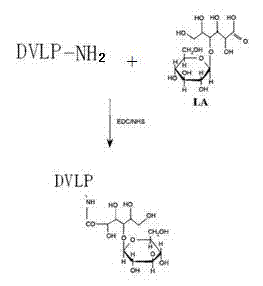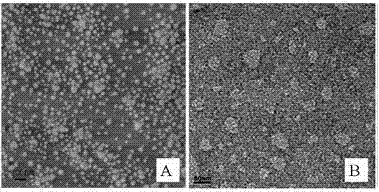Method for preparing lactobionic acid-crosslinked hepatic cell targeted viral vector
A viral vector and hepatocyte technology, applied in the field of viral proteins, can solve problems such as poor specificity and unsatisfactory application, and achieve the effect of overcoming poor specificity
- Summary
- Abstract
- Description
- Claims
- Application Information
AI Technical Summary
Problems solved by technology
Method used
Image
Examples
Embodiment Construction
[0028] Taking rotavirus structural protein VP6 as a specific example below, the technical solution of the present invention is further described. The experimental methods described in the examples are conventional methods unless otherwise specified; the reagents and materials, if not specified, Both are commercially available. The same scheme is also applicable to rotavirus structural protein VP2, and various specific examples can be formed by selecting and replacing the corresponding conditions of each step, all of which are within the scope of protection of the present invention.
[0029] A method for preparing a lactosylated liver cell-targeting virus vector in this embodiment, such as figure 1 shown, including the following steps:
[0030] Step 1: Construct the gene of rotavirus (RV) structural protein VP6 into vector pET28a to obtain plasmid pET-VP6;
[0031] Step 2: Transform the plasmid pET-VP6 obtained in Step 1 into Escherichia coli to express the inclusion body pro...
PUM
 Login to View More
Login to View More Abstract
Description
Claims
Application Information
 Login to View More
Login to View More - R&D
- Intellectual Property
- Life Sciences
- Materials
- Tech Scout
- Unparalleled Data Quality
- Higher Quality Content
- 60% Fewer Hallucinations
Browse by: Latest US Patents, China's latest patents, Technical Efficacy Thesaurus, Application Domain, Technology Topic, Popular Technical Reports.
© 2025 PatSnap. All rights reserved.Legal|Privacy policy|Modern Slavery Act Transparency Statement|Sitemap|About US| Contact US: help@patsnap.com



